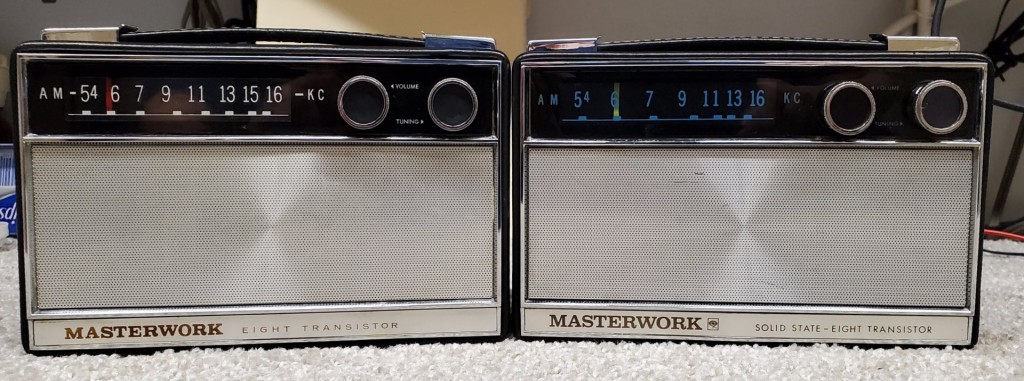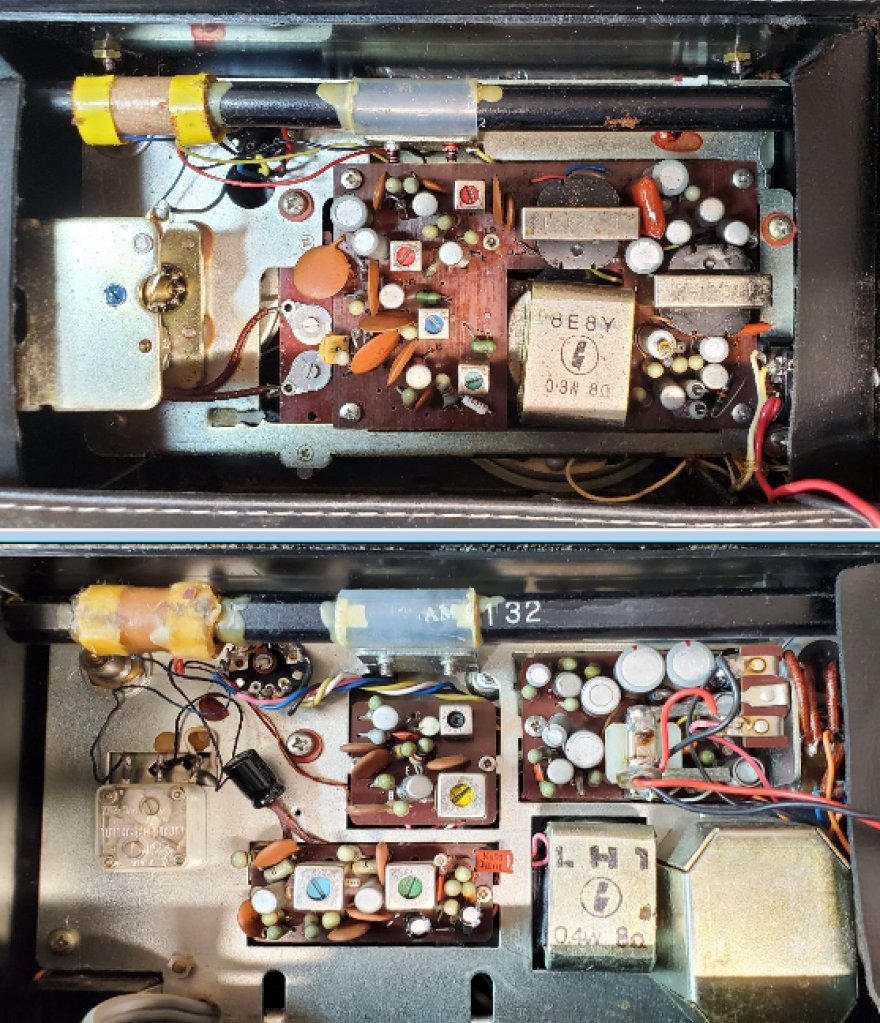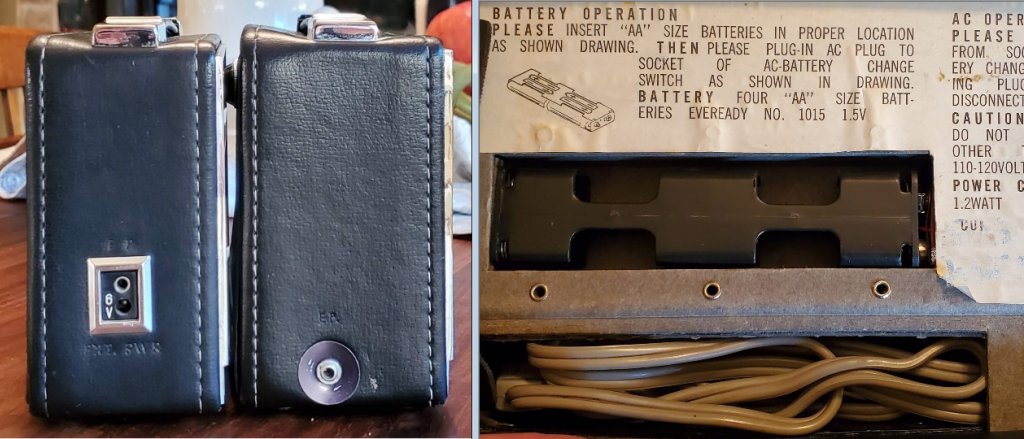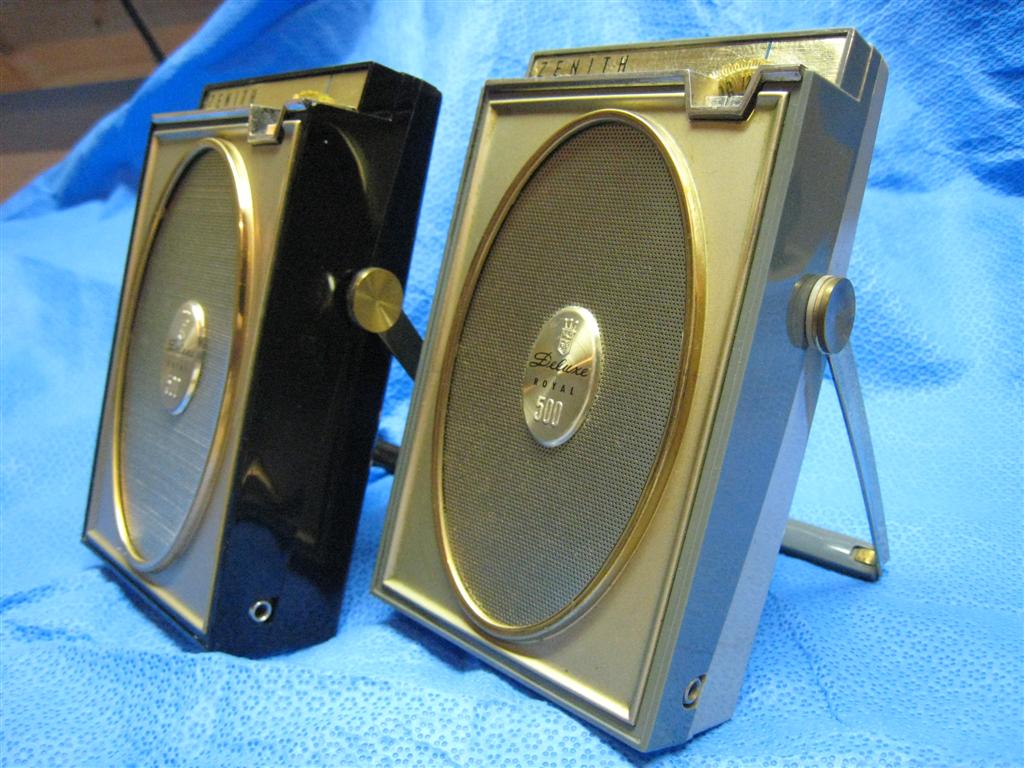Masterwork M-2812/M-2850 AM Portable Radios

Intro: Here is another look back at some classic analog portable radios. Back in the 1960’s I was always trying to improve reception of my favorite AM station which was very weak where I lived. I had by now deployed wire antennas hung out of my bedroom window and found a few magic places where conditions provided stronger reception but I was still frustrated that for general listening that favorite station was very quiet and noisy. I had a nice RCA radio which had great sound on stronger signals but not much RF gain…this weak station could barely be heard with the volume all the way up although it was much stronger on car radios. Then one day I was buying batteries at the local TV/Radio repair shop when the owner (whom my family had known for many years plus I had asked him radio questions before) said, “Hey, while you’re here you should check out this new radio we just got in…it’s not too expensive but it’s really hot on AM”. That’s all I had to hear. He let me take it out onto the sidewalk and that weak station was really loud and clear on it…much better than on my RCA. I HAD to have this radio. It sold for $25 which was inexpensive compared with pricier portables from the big names (my RCA had cost more but that was about 5 years earlier and improvements in portable radio design and performance were coming fast during those years). I had saved enough money from my job to buy it so my parents gave me permission to go ahead and get it…it was a big purchase for a kid at the time.
Needless to say, I was in radio heaven! Not only did that station boom in but there were many other stations to hear and the nighttime skip stations were all stronger and more dependable. Awesome! And I loved its slide rule dial.
Sad to say that in the later 60’s when popular music stations started popping up on FM, I sold it to buy an AM/FM portable which was a fine sounding FM portable but it was not as good as the Masterwork on AM. At the time FM was so exciting I kind of forgot about AM and when I went to college, their information packet suggested I bring an FM radio in order to hear the campus radio station.
But back to that miracle AM portable…it was a Masterwork but I had forgotten its model number. Masterwork was owned by CBS yet although it may not have enjoyed the same name recognition as companies such as RCA or Zenith, they nevertheless marketed a wide range of electronic products including many radios and phonos…search eBay for Masterwork Radio and you’ll see what I mean. (There is a current day company with the Masterwork name but that has no relation to the company of the 60’s). These were not clones of other models…they were manufactured by or for CBS although I don’t know if CBS itself was the actual manufacturer or where they were made…I suspect they were outsourced.
Finding this Masterwork today was not easy. In fact, it took me 2 years and my search led to a few interesting discoveries. I didn’t initially remember the model number of the radio so I just searched for Masterwork Radios on eBay until I found one – it was a model M-2850 (I still remembered what it looked like). I was gratified that it arrived in good condition except for a broken battery holder. Amazingly I had an identical one in my parts stock…I had bought a selection of generic battery holders a few years ago and one of those generic holders was identical to the one in the radio…you don’t’ get much luckier than that. But although the radio ran on 4 AA cells there was also a built-in AC power supply with an AC cord tucked in the back…I hadn’t remembered that from my old radio. But it must have been there I reasoned…I guess I just never used it??? Oh well…stranger things have happened…my memory is not always perfect, and after all it had been over 55 years. Still, it was hard to believe. Then… the other shoe dropped.
I had continued to watch for Masterwork radios and more than a year later another one popped up, but this one was a model M-2812. It looked identical to the M-2850 except for the color of the dial numbers but I was curious to see how this was different so I snatched it up. It also arrived in working condition but guess what…no built in AC. Great! I wasn’t crazy.

Left: M-2812 Right: M-2850
Comparing the two models was interesting. The M-2850 has additional circuitry for the AC power supply and there are three circuit boards whereas the non-AC M-2812 is all on one PCB. But the original model had an air variable tuning condenser while the AC version had the typical ceramic vari-cap of later designs telling me the M-2850 was probably a later model. The M-2850 is about 3/16” deeper than the M-2812. There isn’t much info online about these radios but my best guess indicates that the 2812 was probably made between 1964-1965 while the 2850 was probably introduced around 1966.

Top: M-2812 – Bottom M-2850
Neither of the two radios I found needed any real repairs…no problems or weak caps. They just needed cleaning and alignment and had scratchy volume controls which had to be cleaned. The controls were of closed design but I was able to get some De-Ox-It into them through an opening where the rotating shaft enters the control. Although both were in good enough condition as found to be entirely usable, I did note some subtle improvements after careful alignment. I also cleaned and revitalized the leather although it was in good condition as received. These radios are models of service accessibility…even the leather handles and associated hardware are screwed into place and were thus easy to remove for more thorough cleaning. Circuit access for repair and adjustment is exemplary on both versions. By the way, although the radio proudly says “Eight Transistor” on the front bezel it actually contains 9 transistors…the 9th being a bias regulator for the output transistors.

Left: M-2812 Has DC Input Jack Right: M-2850 Has Built-in AC Cord
Performance Evaluations: I remembered how sensitive this radio was so I did reception tests before and after alignment. Firstly, the two radios sound slightly different…the M-2812 has slightly more high frequency response while the M-2850 has a slightly mellower tone quality. They have different speakers which could account for this or differences in the electronics could also come into play. To be sure these are not boomboxes…there is no pounding bass but they both sound pleasant and natural.

Zenith Royal 500H: A Time-proven Classic
I started by using a *** radio, a Zenith Royal 500H as a reference. I scanned the AM dial and found the radios pretty close to each other. This was good news because the Zenith is widely considered to be an excellent AM portable. The Zenith sounded more like the M-2850 while the M-2812 had more treble clarity. I had previously aligned the M-2850 by figuring the circuit out by trial and error which is usually pretty easy on an AM only portable but by now I had obtained a SAMS Photofact for the M-2812 so I did a careful alignment on it…everything was close but as usually happens there were incremental improvements so I was eager to see if the improvements would be noticeable. (Incidentally, although the two radios have a few design differences their RF performance seemed identical).
I went out into the back yard where there is no RFI to maximize differences in the radios’ sensitivity and the first signal I compared was just a murmuring carrier on 540 KHz on the Zenith. For comparison there was no trace of this on the original XHDATA D-801 which is another *** AM radio. Yet I was able to understand what was being said on the Masterwork. Next was a medium strength signal on 700 KHz and the Masterwork rendered it with a bit less background hiss than on the Zenith even though the Zenith had a slightly mellower tone quality. The difference in sensitivity and background noise was real. I also found a trace signal on 1580 KHz and again the Masterwork was louder and had less background hiss. I then scanned the whole band and the Masterwork (both of them) beat the Zenith up and down the AM dial. (Before someone jumps in here I have four Zenith 500H’s and I have worked on them all so I know they are working well but the Masterwork beat it all over the dial). Having outperformed some *** Star radios I began to compare it with some higher performing models and eventually determined that these Masterwork radios both rank ***1/2 on the AM Mega Shootout which was a surprise. They clearly outperformed all of the *** Star radios I compared them to and were pretty close to some **** models in terms of raw sensitivity with very decent selectivity just a tad below the **** radios.

M-2812 – Large 6 1/4: Ferrite Rod & Air Variabe Tuning Condenser
But when I thought more about it, it began to make sense. The Zenith Royal 500H was introduced in 1961, 4-5 years before these Masterworks were made. As I mentioned earlier, transistor technology was advancing at a very fast pace in those years so improved devices could offer improved performance. And although the Masterwork lacks the untuned RF stage of the Zenith, the Masterwork is a larger radio measuring about 7.5 x 4.5 x 2.5 inches and its 6 ¼ ferrite rod is much larger and can deliver more signal.
I also tried the radios with a few small passive tuned loops like these:
Kaito AN-100 or Terk AM Advantage
and they worked well with both bringing the sensitivity up to ***** level.
Conclusion: There’s not a lot more to say. The Masterwork M-2812 and M-2840 are superb AM portables which reveal the advances in the state of the art between the early to mid 1960’s…at least in terms of low-cost portable radios. Remember, the Zenith Royal 500H retailed for $59.95 in 1961 while the M-2812 sold for $25 in 1964. When I got mine as a kid, I was delighted by how well it performed and it was gratifying to see how well it holds up today. If you can find either one of these, I recommend them highly!
You must be logged in to post a comment.